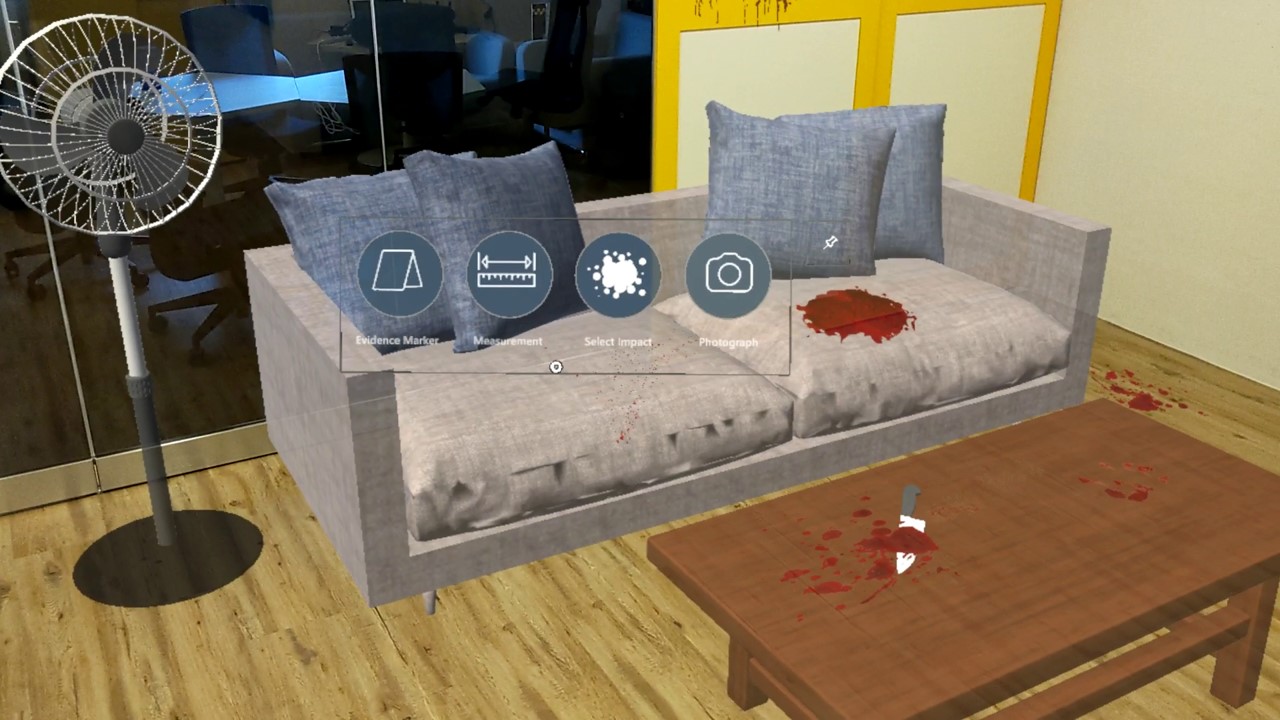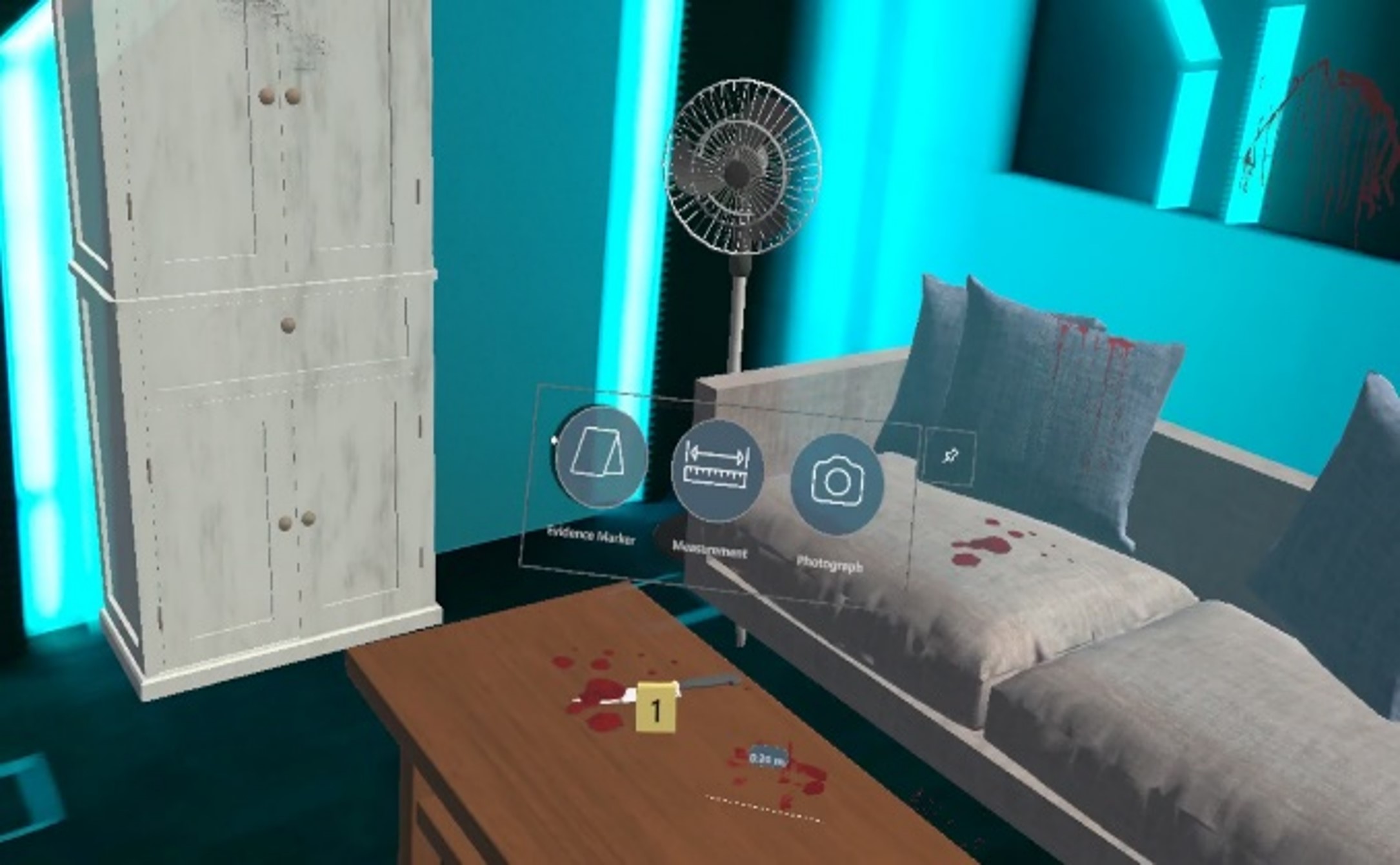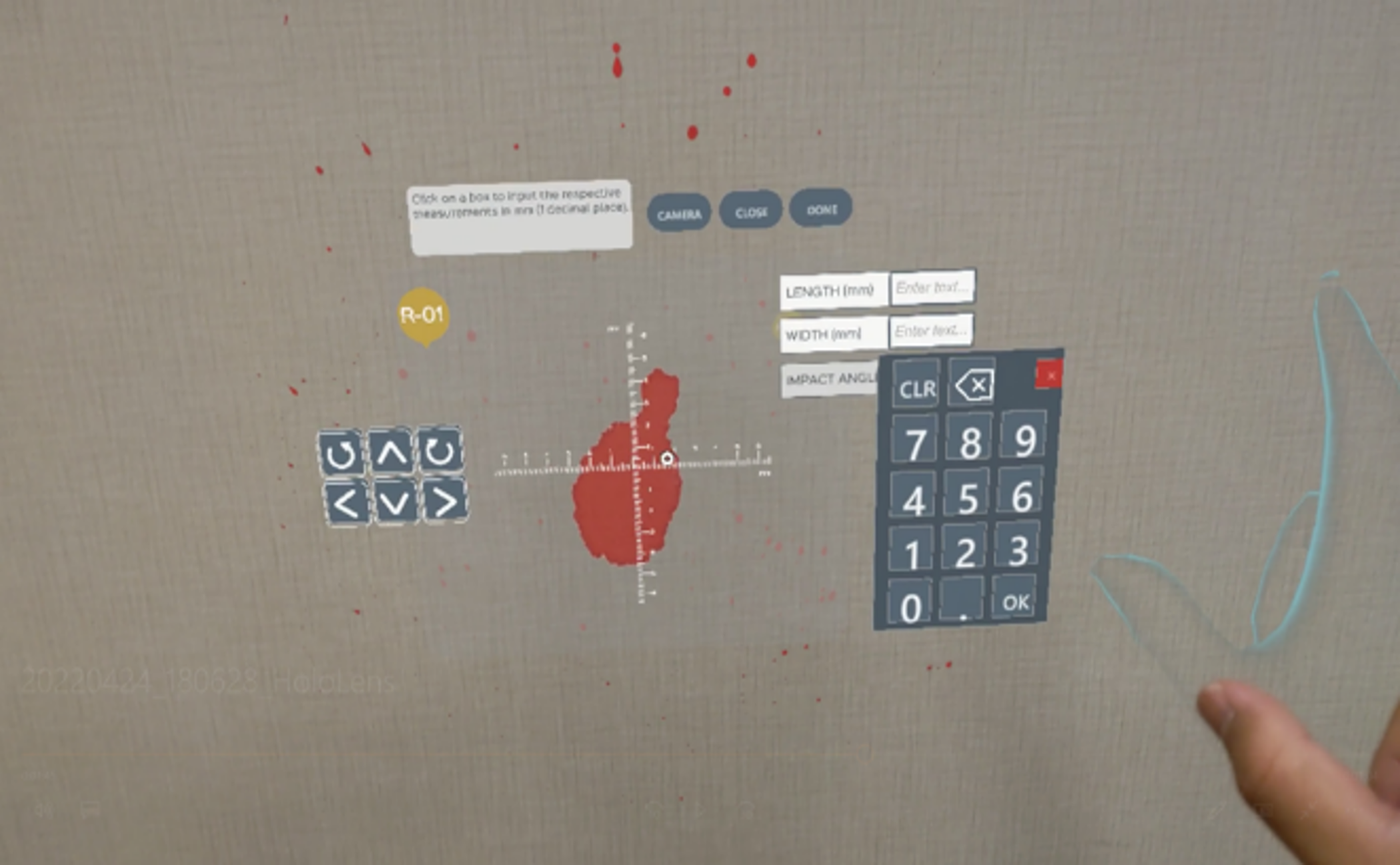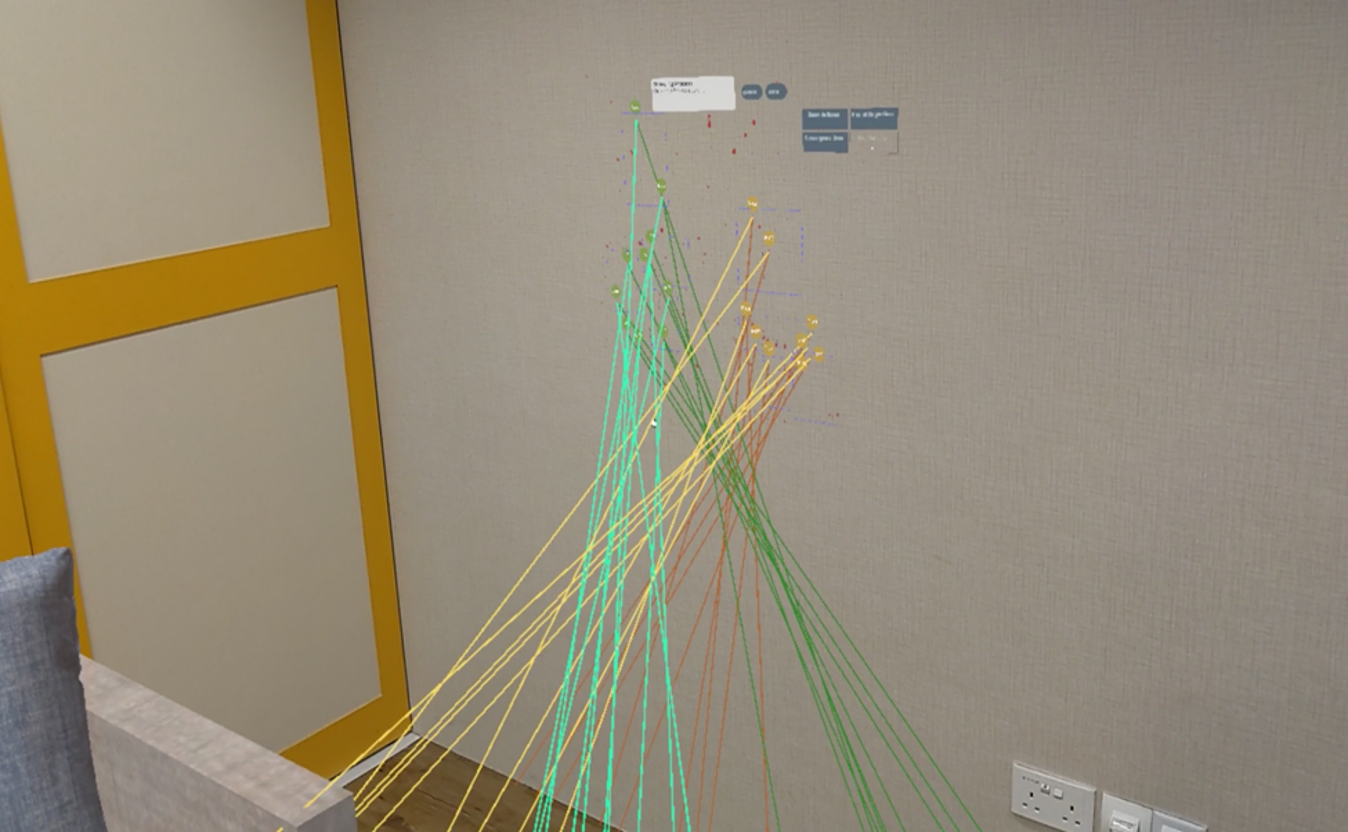
Bloodstain Pattern Analysis Simulation

(Photo: HTX)
Bloodstain Pattern Analysis (BPA) is the study of the size, shape, and distribution of bloodstains found at a crime scene. It is a crucial method that can serve to guide the direction of investigations or validate statements of accounts gathered in the course of investigations.
Training in BPA is critical to ensure forensic professionals have the necessary skills and knowledge to conduct accurate and reliable analyses. The effectiveness of BPA as a forensic science technique relies heavily on the expertise and training of forensic professionals. Accurate and reliable BPA analysis requires a thorough understanding of the physics of bloodstain pattern formation, and the ability to identify and analyse various types of bloodstain patterns.
Conventional BPA training requires the creation of mock crime scenes and one such way is to use flipchart papers mounted onto walls and different surfaces, which are then splashed with animal/synthetic blood to recreate different types of bloodstains and training scenarios. This method is not only time-consuming and labour intensive but also lacks precision, as humans are not robots, and slight changes in the force and angle used to create these patterns would cause deviations to the eventual size and distribution of bloodstains observed.
Mixed Reality Simulation System
In order to address the limitations of conventional training methods, HTX leveraged on Mixed-Reality technology to develop a simulation training system that could augment and improve training for Crime Scene Specialists while providing significant savings in time, cost, and manpower compared to conventional BPA training methods. The BPA trainers typically need 1-2 hours to set up a crime scene mock-up for conventional training. This setup time can be reduced to 20 minutes or less for Mixed Reality training.
With Mixed Reality, holographic images are projected into the user’s field of view to create realistic virtual crime scenes with enhanced immersion. Training could take place in a mock crime scene with holographic bloodstains easily applied onto different surfaces, eliminating the need to create synthetic bloodstains. Mixed Reality significantly decreases the likelihood of cybersickness and the system also makes use of naturalistic hand gestures so that trainees could interact with the virtual elements of the simulation without the need for hardware controllers, which would have made it difficult for them to hold and use their physical tools simultaneously.
The system is highly portable; it consists of a laptop, wireless router, and the Microsoft HoloLens 2 Mixed Reality headset. The system supports training of up to two trainees concurrently, but it could be easily scaled up to higher numbers if required. Trainees need to only wear the Mixed Reality headset, whereas the instructor views their training progress using either the laptop or a separate headset. The system contains two main modules: The instructor module and the training module.
 System real-time footage (Photo: HTX)
System real-time footage (Photo: HTX)
Scene Creation
Through the built-in Scene Creation module, the instructor can freely create/modify virtual crime scenes. There are no restrictions on the room size, whereas the maximum training area is only limited by the remaining hard disk space in the Mixed Reality headset. The instructor then proceeds to furnish the virtual scene by selecting pre-loaded furniture models, from the Assets Library, which appear as holographic images on the Mixed Reality headset that the instructor can rotate, scale, and translate within the chosen training area. Once the instructor is satisfied with the placement of the virtual furniture, they can then proceed to overlay bloodstains on different surfaces. These virtual bloodstains are pre-rendered and are modelled based on photograph specimens. They can also be placed on physical features in the training area, such as walls, flooring, and even physical furniture, should the instructor want to use both physical and virtual furniture in the scene. The instructor can then save the mixed reality crime scene and use it for future training scenarios.
Stringing
One method which Crime Scene Specialists use to determine the area of origin for an impact bloodstain pattern is called “stringing,” whereby physical strings are pulled towards the ground from individual bloodstains based on their calculated impact angles. The area where multiple strings overlap indicates the estimated area of origin. This is a tedious and time-consuming process that requires instructors to manually assess if trainees have carried out the task correctly. It would also take an inexperienced trainee more than half an hour to complete the task.
To enhance the learning process, the Mixed Reality system provides a simple and automated interface for trainees to measure the bloodstain and key in the relevant data. The system then displays an accurate rendering of virtual holographic strings, based on the inputs and angles derived by the trainee, allowing trainees to better visualise the end-result of the “stringing” process while cutting down the time needed from 30 to less than 5 minutes to assess each trainee individually.

Providing inputs for Stringing (Photo: HTX)
 Mixed reality visualisation of the digital “strings” (Photo: HTX)
Mixed reality visualisation of the digital “strings” (Photo: HTX)
In conclusion, the Mixed Reality Bloodstain Analysis Training System shows promising potential as an effective and engaging training tool. Trial results show that the system is unlikely to cause significant simulator sickness symptoms and indicates high-level of effectiveness in supporting simulation-based learning. Feedback from the participants was largely positive, with many indicating that the system increased training efficacy and learning value. We showcased the system at the Courts of the Future 2022 programme.
Overall, the Mixed Reality system presents a novel and engaging approach to BPA training, offering an immersive and interactive learning experience. Future research can focus on developing more advanced functionalities, such as collaborative aspects and performance evaluation capabilities to provide a more comprehensive and realistic training experience for BPA analysis. With continued development and refinement, the Mixed Reality Bloodstain Analysis Training System could become a valuable tool for BPA professionals and students alike.
Coming Next
We have written a paper on the system which will be published in the upcoming I/ITSEC (Interservice/Industry Training, Simulation and Education) 2023 conference proceedings.
Future improvements to the system will primarily focus on the potential of using the system in an operational context in the digital recreation of real crime scenes and automated analysis of bloodstain patterns. With improvements in the headset’s cameras, the system could incorporate real-time scanning of indoor environments for post-analysis. This real-time scanning could allow investigators to digitally preserve and analyse crime scenes, thereby facilitating further investigations.
Another potential capability would be the integration of an analytics overlay, enabling an automated approach to bloodstain pattern analysis. By capturing and analysing real-world impact patterns, the system could conduct instant digital stringing to pinpoint the area of origin. Moreover, by studying intricate details of blood dispersion and patterns, it might be feasible to predict the likely weapon used during the incident or even to derive a sequence of events leading up to the scene, effectively creating a digital storyboard.
Interested to find out more or discuss further?
Do connect with us: HTX_TechX@htx.gov.sg
Related Links

